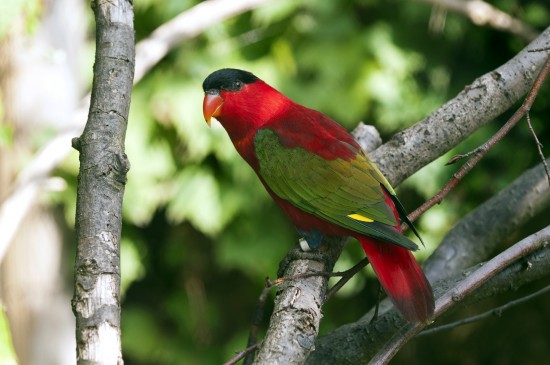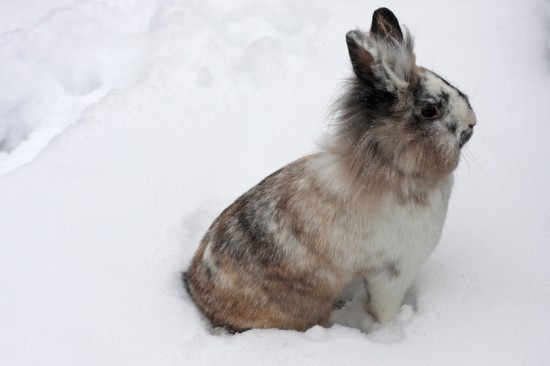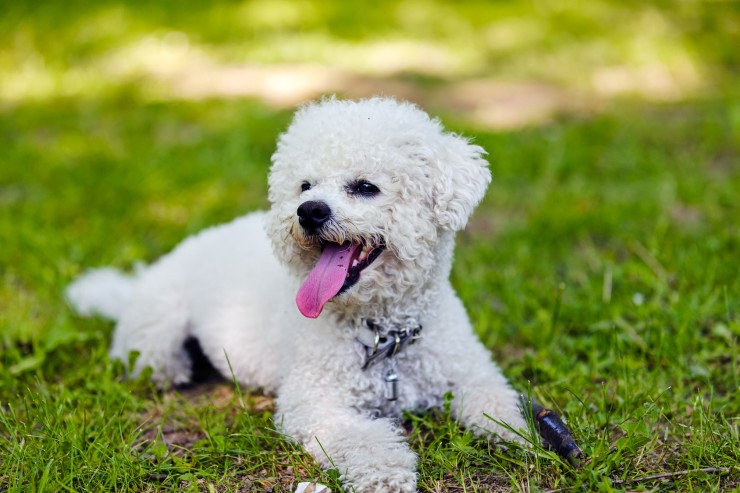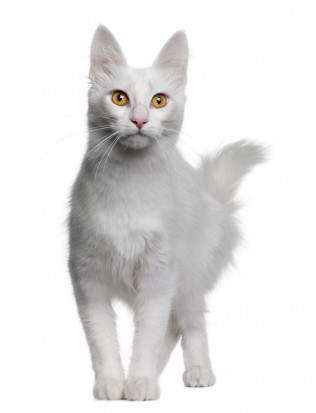

The Purple naped Lory (Lorius domicella) is a species of parrot that is endemic to the islands of Seram, Ambon and Haruku in Indonesia. It is an endangered species in its natural range mainly due to birds being captured for the pet trade.
These birds are around 28cm in length and their feathers are mostly red with darker red feathers at the end of the tail. The top of the head is black fading to purple on the back of the neck and they have green wings, blue thighs and a yellow band across the chest. Their beak is orange and they have a dark grey eye ring around the eyes. Juveniles can be seen by their brown beak, grey-white eye rings and a wider yellow chest band. These birds cannot be sexed visually as both have the same markings.
These birds are described as having an aggressive nature and are territorial so are best kept in an enclosure of their own, away from any other species of bird. If you keep more than one pair, don’t have their enclosure adjoining, as they will try to get at each other to fight. Double wiring is also important to stop any escape.
These birds are relatively hardy and only need access to a frost-free night house in which to roost rather than full heating for the cold winter months.
An ideal minimum size for a suspended cage is 1 metre wide, 1 metre high and 3 metres long or in a flight around 4 metres long and 2 metres high. A concentrate floor is ideal to allow for easy cleaning. Due to the nature of their messy droppings, an indoor cage may not be ideal unless some form of additional protect is provided around it to stop the mess spreading.
These birds are very active and make use of their entire enclosure. They like to climb and to chew so their home needs to include a range of non-toxic wooden perches and other climbing toys. A play gym or similar setup can be favourable for them, though beware of the problems their droppings getting into crevices and causing the spread of bacteria. Chewing perches and other toys is also important for their physical health as this allows them to keep their beak and toe nails in good condition and prevent over growth.
Food and water bowls should also be easy to remove and clean for the same reason and it is ideal to be able to use a wire brush or even a hose on the mesh to stop accumulations of food and mess. Stainless steel bowls are ideal for both food and water as they are easy to clean and relatively resistant to chewing.
Lorys are also keen bathing birds so access to fresh water for this purpose is very important as well as having access to fresh drinking water.
These birds are very inquisitive and intelligent little characters who quickly learn to trust their keeper and can become quite tame and friendly. They can be quite noisy so may not suit those living closely with their neighbours.
In the wild, these birds feed on nectar, fruit, berries, pollen and blossom and their digestive system is specialist for this type of diet. They do sometimes eat a few seeds, such as millet, dehusked oats, wheat and nigella seeds, depending on the bird.
Many keepers of these birds make up their own mixtures to feed them using honey, sugar, cooked rice, soaked white bread and a variety of soft fruit and vegetables. However, you can also buy a ready-made mixture to feed them on in many places.
Lorry keepers have found that they have the healthiest and happiest birds when there is nectar in their diet and the commercially produced varieties are a perfect substitute for what they would eat in the wild. Some of the favoured fruit and vegetables include papaya, melon, mango, pears, apples, carrots, broccoli, squash, bell and jalapeno peppers and leafy greens such as kale. Don’t cook the vegetables as this destroys many of the minerals and vitamins in them and you can chop them up for the birds as well as adding them to the nectar. The wider the variety provided the better, as birds can get bored with food in the same way that humans do.
Sprouted seeds are another healthy benefit for these birds and are suitable for them to eat because they are soft. It is best to sprout your own to avoid bacterial risk and ideal seeds include pumpkin, sunflower seeds, mung beans, corn and lentils.
Lorys prefer a natural breeding location such as a tree stump, though they will often be influenced by where they were raised themselves. It can be best to offer a range of different nesting sites such as nest boxes and logs to allow them to select their favourite, then remove any that aren’t selected. Once they have picked one, keep that to reuse each year and make sure the ones not selected are well cleaned before offering to other birds due to the mess from their droppings.
An ideal nest box size would have a 3-inch hole to allow the birds’ access and a removable or lifting lid can be useful to allow cleaning when the birds are out of the nest. They will add non-toxic saw dust, wood shavings and other similar materials to the bottom of the nest where one to three eggs are laid. The female does the incubating for around 25 days and the young fledge at around 10 weeks.
The parents will continue to feed the birds for a little longer than once they are weaned, it is important to remove the chicks from the enclosure, as their presence will not be tolerated by the adult bird. They don’t have a particular breed season and can product young at any time of the year, while a good condition pair may produce a number of broods in a twelve-month period.
 Caring For Your Rabbits During The Winter
Caring For Your R
Caring For Your Rabbits During The Winter
Caring For Your R
 Rat Terrier - A Relative Newcomer To The Terrier Group
Rat Terrier - A R
Rat Terrier - A Relative Newcomer To The Terrier Group
Rat Terrier - A R
 National Pet Month’s Top Ten Tips For Responsible Pet Ownership Explained
National Pet Mont
National Pet Month’s Top Ten Tips For Responsible Pet Ownership Explained
National Pet Mont
 Learning More About The Most Common Pancreatic Problems In The Dog
Learning More Abo
Learning More About The Most Common Pancreatic Problems In The Dog
Learning More Abo
 Gorgeous White Coated Cats – But Are They Prone To Deafness?
Gorgeous White Co
Gorgeous White Coated Cats – But Are They Prone To Deafness?
Gorgeous White Co
Copyright © 2005-2016 Pet Information All Rights Reserved
Contact us: www162date@outlook.com